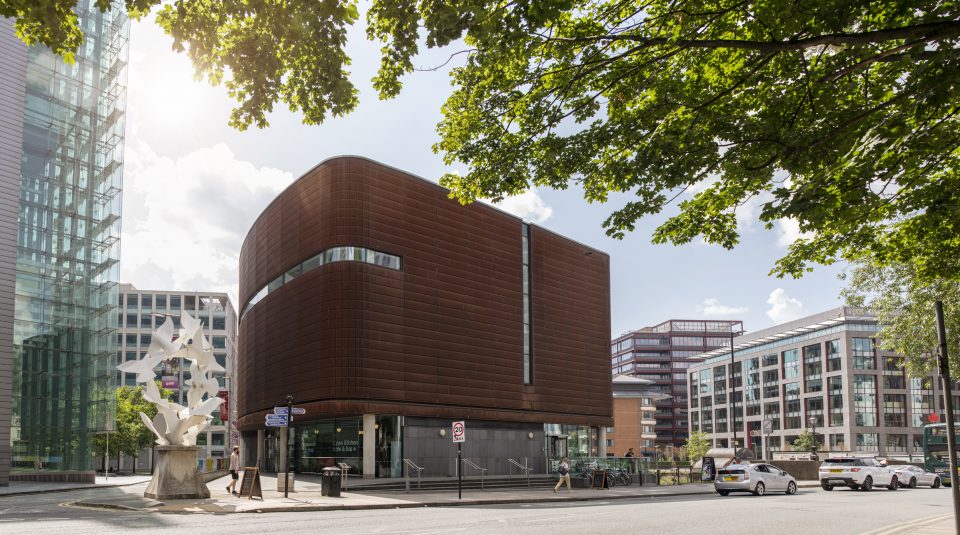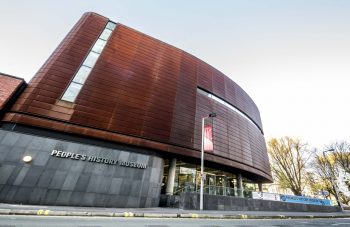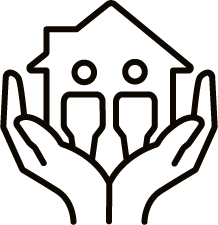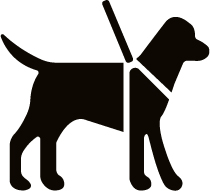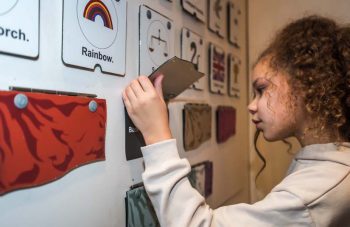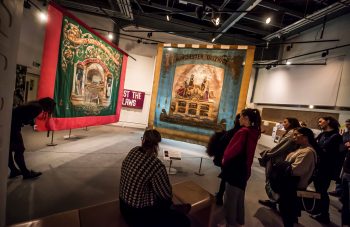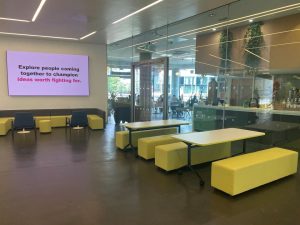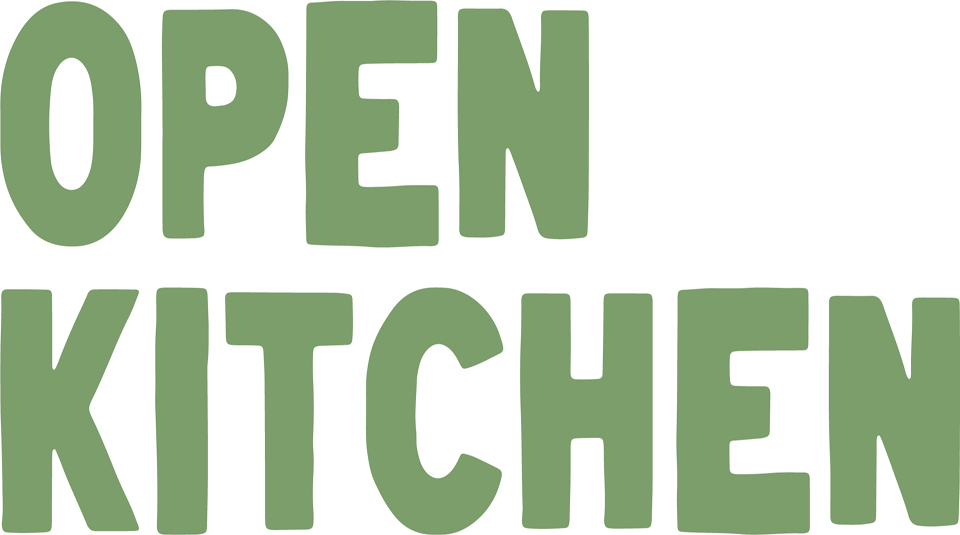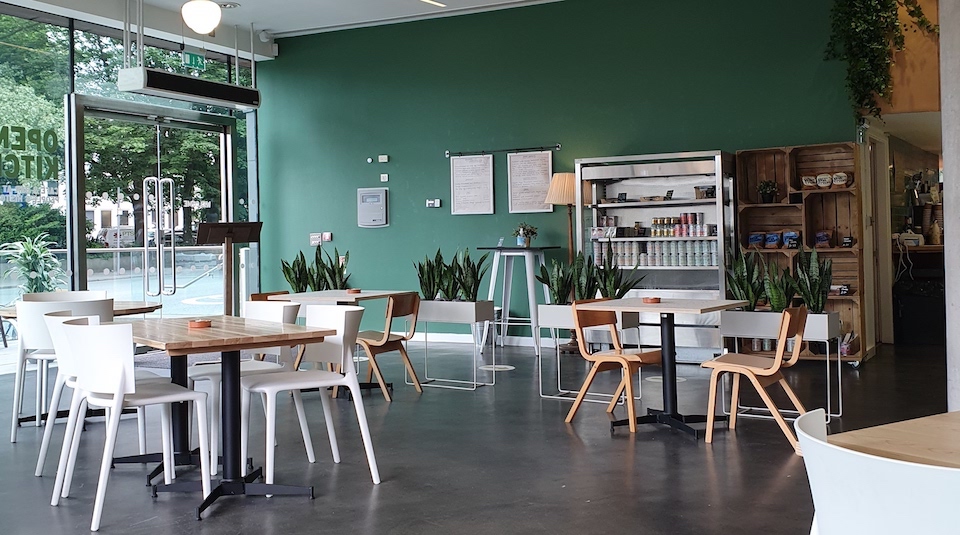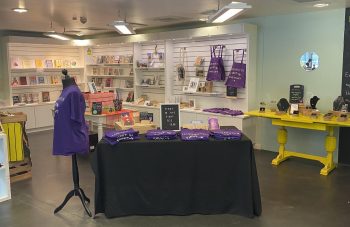Quieter times and Quiet Room
- When arriving at the museum, the welcome desk and foyer area can be busy. If you’re feeling overwhelmed, please speak to a member of staff.
- The museum is less busy between 3.00pm and 5.00pm on Mondays, Wednesdays, and Thursdays, and between 10.00am and 12.00pm on Sunday mornings.
- Our dedicated quiet time is between 2.00pm and 5.00pm on Fridays.
- We have a Quiet Room available; if you need to use this during your visit ask any member of staff.
Sensory tools
- Ear defenders, sensory fidgets, paper, and colouring pencils can be borrowed from access stations on each floor of the museum.
Public events
- A traffic light system will be used during public events. Attendees can display a coloured dot to signify how they would like to communicate with others during the event.
- Ear defenders, sensory fidgets, paper, and colouring pencils can be borrowed from access stations on each floor of the museum for use at public events.
Engaging with the galleries
- The galleries are designed to provide a range of sensory experiences, including several different audio, visual, and touch elements. All touchpoints are regularly cleaned.
- Interpretation is mainly via text panels. Interpretation boards in Gallery One and Gallery Two include Large Print text, pictures and illustrations.
- We use the Ekarv method for our labels and interpretation boards in Gallery One and Gallery Two. This method aims to make text more easily read. Sentences are kept short, with ideas communicated clearly and concisely.
- Colour overlays can be borrowed from access stations on each floor of the museum.
Background noise and flashing lights
- There is background music and sounds in all of the galleries. In Gallery Three there are occasionally TVs playing short films and sound installations. In Gallery One and Gallery Two there are interactive parts of the displays which make sounds when you interact with them.
- In Gallery Three there is background noise from the air conditioning.
- Background noises are turned off for events where necessary.
- No flashing lights are used in Gallery One and Gallery Two. For Gallery Three the museum will provide signage and warning should there be any flashing lights used.
- Some activities that take place in the Mini Theatre space in Gallery One may have flashing or changing coloured lights. Please ask staff on your arrival if any of these activities will be taking place during your visit.
Visual Story
Hearing aid induction loop
- An induction loop is available in the foyer and in the archive.
- Infrared hearing loop facilities are available on request in the Engine Hall, Coal Store, Learning Studio, and Mini Theatre.
- If you are attending a public event or Venue Hire event and need to use the hearing loop, please contact access@phm.org.uk or 0161 838 9190 in advance of your visit.
Kindly supported by Manchester City Council’s Disabled Access Grant Scheme.
British Sign Language (BSL) interpretation
- We provide some BSL interpreted public events; visit the what’s on page for details.
- If you require BSL interpretation for a public event please contact access@phm.org.uk or 0161 838 9190 in advance of your visit. This is subject to availability.
